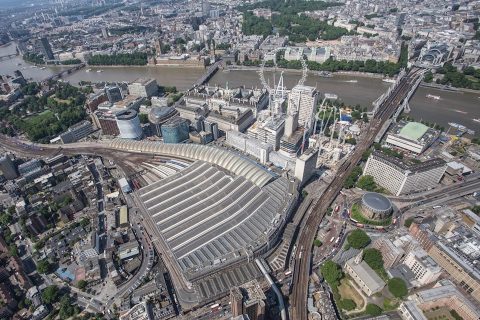Drones become new rail workers
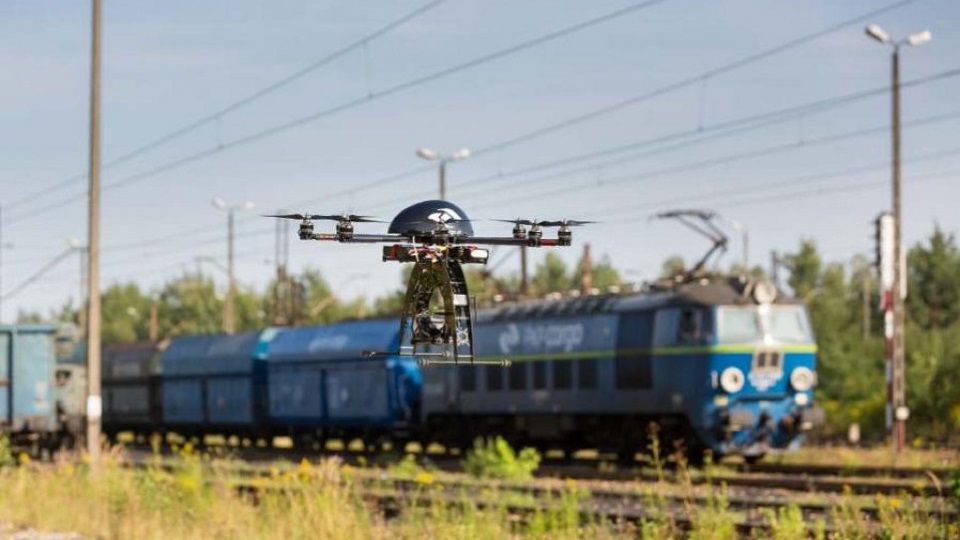
The usage of drone technology is upcoming in the railway industry. More and more railway companies use them in various areas. What roles could the unmanned aerial vehicles play in the rail sector of the future?
In December 2016 the US-based e-commerce giant Amazon made a revolution. The company tested a first parcel delivery with the help of a drone. The unmanned aerial vehicle supplied a tablet device to the customer in 13 minutes. At the moment, such a revolution is hard to imagine on rails. However, several railway companies have already made some steps towards dronisation.
Text continues below the picture.
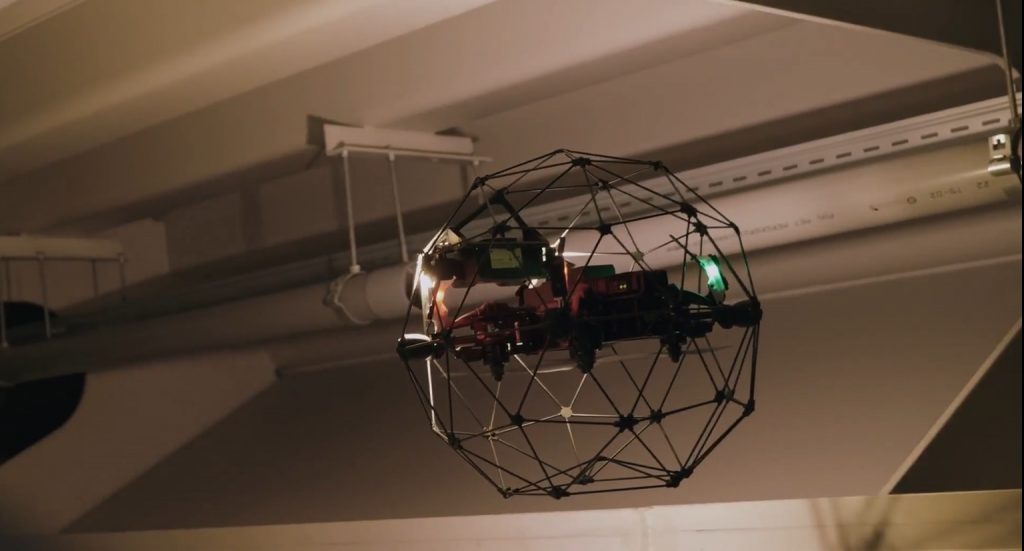 Nederlandse Spoorwegen (NS) plans to use drones for inspections of train stations, source: NS.
Nederlandse Spoorwegen (NS) plans to use drones for inspections of train stations, source: NS.
Station workers
The latest news about railway drones has come from the Netherlands. The Dutch national railway operator Nederlandse Spoorwegen (NS) announced its plans to use the drones for the inspections of train stations. The company considers the measure as an important step for reducing its costs and improving the service. According to NS, the unmanned aerial vehicles will fly over the train stations and platforms. They will make photos and videos of the infrastructure objects. With the help of the drones, NS intends to improve the maintenance of the train stations. Currently, it is unclear whether aerial vehicles could replace the station workers. Let’s wait for the results of the Dutch tests.
Text continues below the picture.
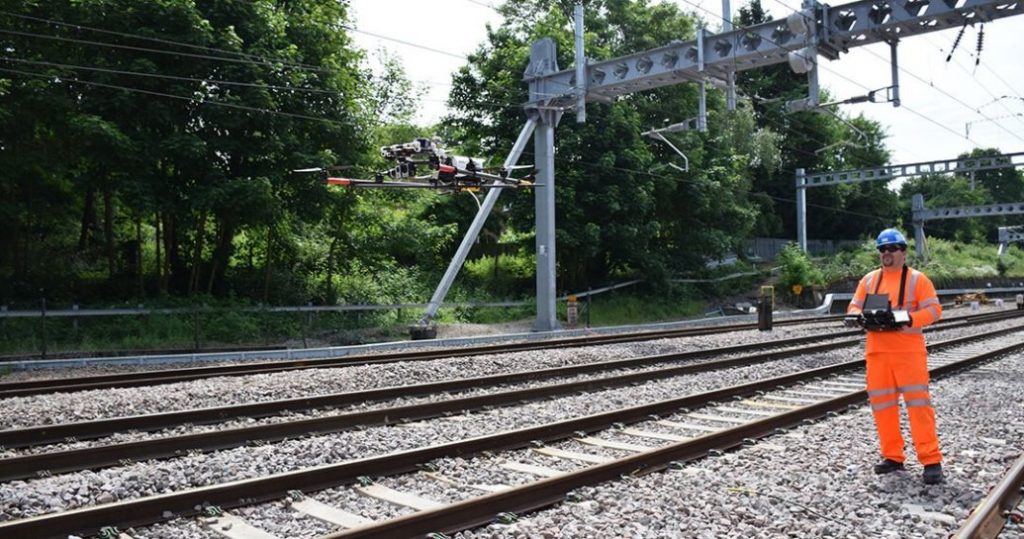 Network Rail uses drones for track maintenance, source: Network Rail.
Network Rail uses drones for track maintenance, source: Network Rail.
Track maintenance
Besides the train stations, drones are capable to monitor the railway tracks. The British rail infrastructure Network Rail has already used them for track inspection. The unmanned aerial vehicles are equipped with a heat-sensitive 4k camera. It helps to identify the damages of the tracks. Network Rail considers drones as a good option in track maintenance: the flights do not require to close the railways for train traffic. Deutsche Bahn intends to adopt the British experience. The German company also plans to use drones for infrastructure monitoring. These endeavours confirm that the unmanned aerial vehicles have a large potential in track maintenance. Who knows, perhaps, in the coming years, we will see how the drones deliver rails or sleepers to the installation points instead of trucks or special wagons.
Text continues below the picture.
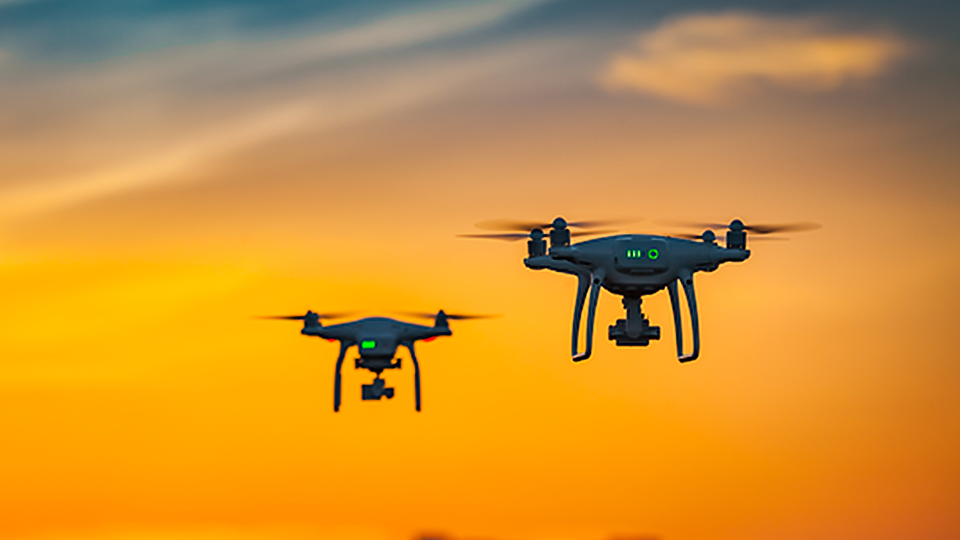 Thales drones, source: Thales.
Thales drones, source: Thales.
Train drivers
Could the drones replace the train drivers? It is a controversial issue. However, they could definitely play an important role in implementing the Automatic Train Operation (ATO). To this end, the French technology company Thales has started to develop special drones. They will serve the ‘eyes’ for the autonomous train. The company noted that the aerial vehicles will fly ahead of the train in order to monitor the tracks for the safe trip. Thales plans to equip its railway drones called as Railbots with advanced optronics, infra-red sensors and other technologies.
Text continues below the video.
PKP Cargo drones in action, source: PKP Cargo.
Railway guards
For many years, PKP Cargo, the largest rail freight operator in Poland, has been suffering from the thefts of goods from their trains. Usually, the thieves steal the coal at the railway junctions when the train makes a stop at a railway junction. In 2015 the rail company decided to purchase two drones for crime-fighting. The unmanned aerial vehicles began to monitor the railway stations in the Silesia region. The results were impressive: the number of thefts decreased by 60 per cent during the first years of the drone flights. Therefore, PKP Cargo extended the fleet of ‘aerial guards’ by acquiring the third drone in 2017. All the aerial vehicles are still in service.

